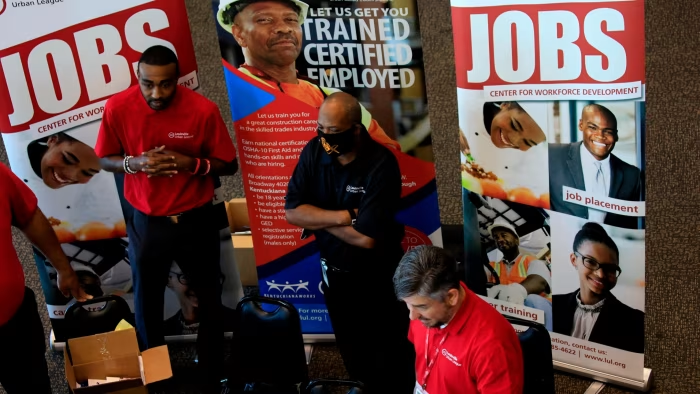3rd May, 2024
The United States saw an increase of 175,000 jobs in April, falling short of expectations and marking the smallest gain in six months as the labor market cools down in the world’s largest economy.
This figure from Friday’s non-farm payrolls contrasts with predictions of a 241,000 increase in a Bloomberg survey, fueling speculations that the Federal Reserve might opt for an earlier interest rate cut than previously anticipated.
The release follows the US central bank’s indication on Wednesday that interest rates would stay at a 23-year high of 5.25 to 5.5 percent for a longer period, grappling with persistent inflation challenges.
Market traders reacted to the data by adjusting their forecasts for the timing of the Fed’s first interest rate cut this year, moving it up to September from November before the data release. The futures market now fully prices in two rate cuts for this year.
The two-year Treasury yield, linked to interest rate expectations, dipped by 0.05 percentage points to 4.82 percent during mid-morning trade, though it initially fell by as much as 0.16 percentage points to a one-month low right after the report was published. The S&P 500 climbed by 1 percent.
US unemployment slightly rose to 3.9 percent, compared to an estimated 3.8 percent. Friday’s figures also reflected the slowest monthly job growth pace since October 2023.
Revised data for February and March revealed 22,000 fewer jobs were added than previously stated. The slowdown in job creation was particularly noticeable in leisure and hospitality, construction, and the government sector, while healthcare and retailing showed robust employment.
The report also highlighted a decrease in average weekly hours worked and soft earnings growth.
Paul Ashworth, chief North America economist at Capital Economics, noted, “It was a record, or near-record, warm winter, which might have boosted employment growth a bit, and now we’re returning to trend. But this definitely gets the market thinking that rate cuts might not be off the table — because it’s not just a slowdown in employment growth, you’ve also got pretty weak average hourly earnings.”
Despite the cooling labor market, the Fed’s future actions will be more influenced by inflation metrics, with concerns that it’s not declining as quickly as officials hoped. Kathy Bostjancic, chief economist at Nationwide, commented, “The inflation readings will call the tune for the Fed.”
However, the figures are likely to dampen discussions about the Fed needing to further increase interest rates to curb an overheating economy, which will be a relief for the central bank.
Ryan Sweet, chief US economist at Oxford Economics, remarked, “This is still a very strong jobs report — there’s not a lot of indication that there are cracks forming in the labor market. Overall, this is what the Fed has been wanting to see: softening in job growth, and the job market cooling a little bit or just rebalancing.”
On the other hand, Citi US economist Veronica Clark expressed some concerns about Friday’s report indicating a potential slowdown in the labor market. She mentioned, “The hiring rate is falling, hours worked are coming down, and part-time, unstable work is rising. All these signs that businesses are looking to cut labor costs.”
With less than six months until the US election, President Joe Biden characterized the data as another demonstration of the resilient economy under his leadership. He stated, “The great American comeback continues. When I took office, I inherited an economy on the brink, with the worst economic crisis in a century. I had a plan to turn our country around and build our economy from the middle out and the bottom up. Now we are seeing that plan in action.”

